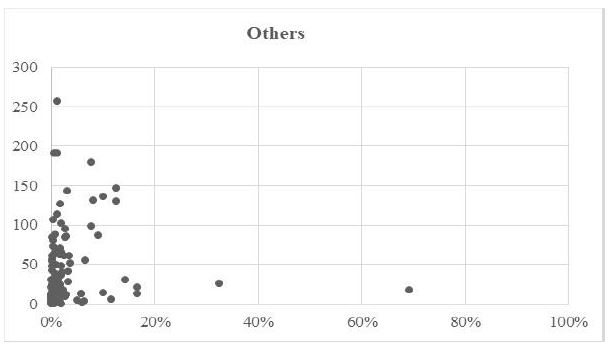Faith and Sexual Violence: An Empirical Assessment
DOI:
https://doi.org/10.5281/zenodo.10966448Keywords:
sexual violence, religious composition, rape statistics by countryAbstract
This study empirically examines the potential impact of religious composition on sexual violence on a global scale. A dataset of 120 countries, for which both religious distribution and rape per capita data are available, is used for analysis. Preliminary descriptive analyses reveal that nations with the highest rape per capita rates are predominantly Christian-majority, with an average Christian population of 83%. North America and Europe are home to 68% of these countries. Conversely, countries with the lowest per capita rates of rape show a significant presence of Muslim populations, averaging 36%. More than 60% of Asian countries with significant Buddhist, Hindu, and Muslim populations are categorized as low in terms of the prevalence of sexual violence per capita. Regression analysis indicates a statistically significant positive relationship between the percentage of the Christian population and the incidence of rapes per capita. Conversely, there appears to be an inverse relationship between Muslim population percentage and the occurrence of sexual violence. The examined dataset did not yield any evidence to support a relationship between the percentages of Hindu, Buddhist, Jewish, and other religious groups and the incidence of rapes per capita. These findings suggest that there are potential faith-related factors that play a role in sexual violence, highlighting the need for more research.
Downloads
References
Barnett, M. D., Sligar, K. B., & Wang, C. D. (2018). Religious affiliation, religiosity, gender, and rape myth acceptance: Feminist theory and rape culture. Journal of Interpersonal Violence, 33(8), 1219-1235.
Buchwald, E., Fletcher, P., & Roth, M. (Eds.). (1993). Transforming a rape culture. Milkweed Editions.
Burt, M. R. (1980). Cultural myths and supports for rape. Journal of Personality and Social Psychology, 38(2), 217.
Jozkowski, K. N., & Wiersma‐Mosley, J. D. (2017). The Greek system: How gender inequality and class privilege perpetuate rape culture. Family Relations, 66(1), 89-103.
Ozili, P. K. (2023). The acceptable R-square in empirical modelling for social science research. In: Social Research Methodology and Publishing Results: A Guide to Non-Native English Speakers, pp. 134-143. IGI Global.
Palm, S. (2018). Religion, gender norms and campus rape culture: Building resistance from below. Politeia (02568845), 37(2).
United Nations. (1993, December 20). Declaration on the elimination of violence against women. 48(104). http://www.un-documents.net/a48r104.html.
WHO. (2024, March 25). Violence against women. Available at: https://www.who.int/news-room/fact-sheets/detail/ violence-against-women.
World Population Review. (2024). Religion by country 2024. Available at: https:// worldpopulationreview.com/ country - rankings/religion-by-country.
World Population Review. (2024). Rape Statistics by Country 2024. Available at: https:// worldpopulationreview.com /country-rankings/rape-statistics-by-country.

Downloads
Published
How to Cite
Issue
Section
ARK
License
Copyright (c) 2024 SUBHODEEP MUKHOPADHYAY

This work is licensed under a Creative Commons Attribution 4.0 International License.
Research Articles in 'Social Science Journal for Advanced Research' are Open Access articles published under the Creative Commons CC BY License Creative Commons Attribution 4.0 International License http://creativecommons.org/licenses/by/4.0/. This license allows you to share – copy and redistribute the material in any medium or format. Adapt – remix, transform, and build upon the material for any purpose, even commercially.










